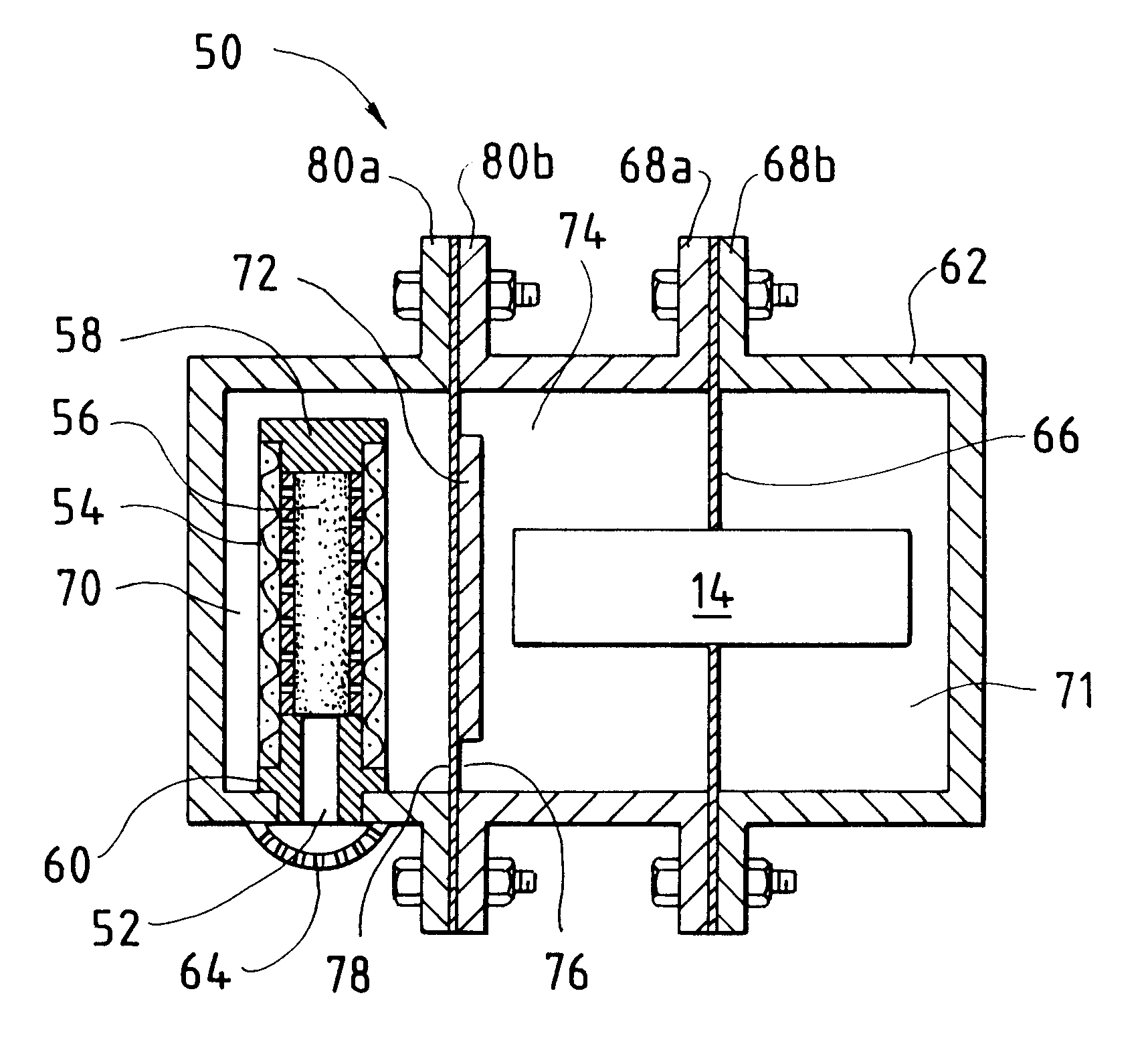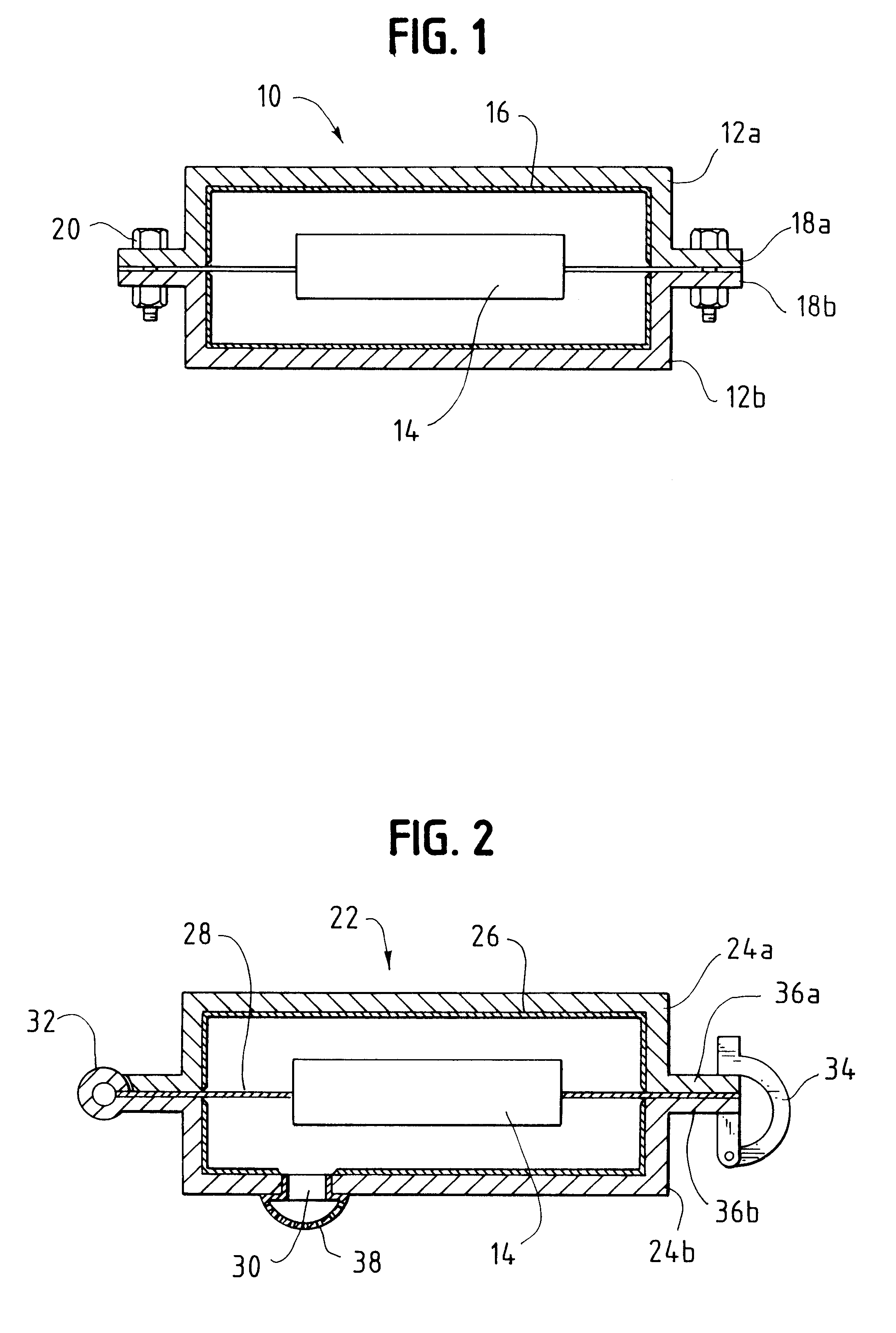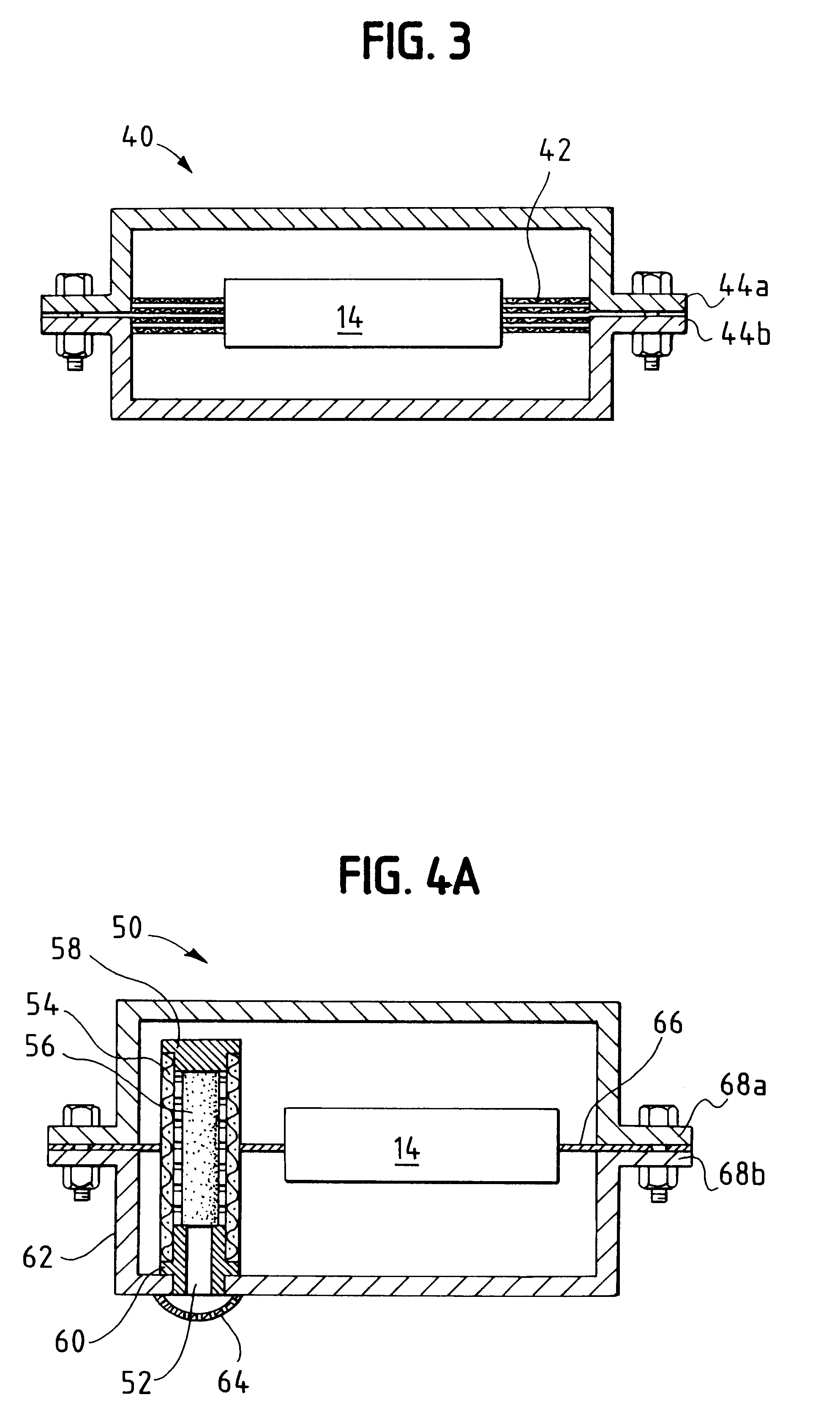Enclosure for electrical components installed in locations where a flammable gas or vapor is expected to be present
a technology for electrical components and enclosures, which is applied in the direction of cell components, casings/cabinets/drawers, electrical apparatus casings/cabinets/drawers, etc., can solve the problems of flammable fluid penetration into the interior of the enclosure of electrical components, defects in the seal or misalignment of the seal, etc., to reduce the concentration of flammable fluid, reduce the likelihood of flammable fluid being ignited, and the effect of reducing
- Summary
- Abstract
- Description
- Claims
- Application Information
AI Technical Summary
Benefits of technology
Problems solved by technology
Method used
Image
Examples
Embodiment Construction
FIG. 1 is a schematic cross sectional view of an electrical component enclosure 10. In this preferred embodiment, enclosure 10 comprises a housing 12 having two pieces 12a and 12b. Electrical component 14 may be, for example, a switch, a motor starter, a motor, an electrical panel board, an electrochemical fuel cell, or other electrical component which needs protection.
Coating 16 is disposed on interior surfaces of housing pieces 12a and 12b. Coating 16 comprises a catalyst for inducing a flammable fluid to react to produce a non-flammable product. In a preferred embodiment, for use in the presence of hydrogen and oxygen gas mixtures, the catalyst is a wet-proof platinum catalyst, mixed in a zeolite (clay) and polymeric binder that is applied like a paint, using a sprayer or brush. In this embodiment, hydrogen is induced by the catalyst to react with the oxygen to produce water. Because water is a product of this reaction, water may be present near the catalyst. Accordingly, the pre...
PUM
 Login to View More
Login to View More Abstract
Description
Claims
Application Information
 Login to View More
Login to View More - R&D
- Intellectual Property
- Life Sciences
- Materials
- Tech Scout
- Unparalleled Data Quality
- Higher Quality Content
- 60% Fewer Hallucinations
Browse by: Latest US Patents, China's latest patents, Technical Efficacy Thesaurus, Application Domain, Technology Topic, Popular Technical Reports.
© 2025 PatSnap. All rights reserved.Legal|Privacy policy|Modern Slavery Act Transparency Statement|Sitemap|About US| Contact US: help@patsnap.com



